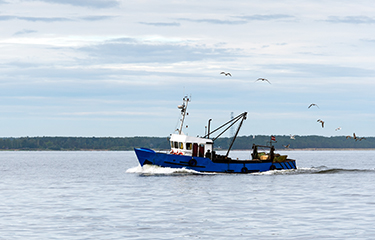The European Commission has proposed large cuts to the total allowable catches (TACs) of Baltic cod for 2021, with the new advice recognizing that stocks have continued to decrease and are below healthy levels.
For western Baltic cod, it recommends an 11 percent reduction in the TAC to 3,395 metric tons (MT), at the same time as a 70 percent cut in the eastern cod to just 595 MT.
The commission acknowledged that western cod has been at very low levels for several years. In addition to the 11-percent reduction, it wants to maintain the additional protection measures adopted for 2020, including a spawning closure period in the entire area and limits for recreational fishermen. Also, in the deeper waters of the eastern part, the TAC use is limited to by-catches and recreational fishing is forbidden.
Meanwhile, for eastern cod, and with the knowledge that the stock size has been below safe biological limits for some time, the commission prohibited cod fishing in the most abundant areas for the second-half of 2019. For this year, the TAC was substantially reduced and limited to by-catches only. The existing spawning closure was extended and recreational fishing was banned.
With the stock size of western herring also remaining below safe biological limits, it is proposed that the TAC is reduced by 50 percent to 1,575 MT. For central herring, a decrease of 36 percent to 97,551 MT is proposed in line with the advice from the International Council for the Exploration of the Sea (ICES), as the stock size has dropped below healthy levels.
In its proposal for 2021 Baltic fishing opportunities, and based on scientific advice, the Commission further advocates an increase quota for herring in the Gulf of Riga by 15 percent to 39,446 MT, and an increase for main basin salmon of 9 percent to 94,496 MT, while maintaining the current levels for herring in the Gulf of Bothnia (65,018 MT), as well as sprat (210,147 MT) and plaice (6,894 MT).
EU Commissioner for Environment, Oceans and Fisheries Virginijus Sinkevičius highlighted that the health of fish stocks in the Baltic Sea is not just being affected by fisheries, and that “multiple factors,” including marine pollution and climate change, are having a serious impact.
“The long-term sustainability of the Baltic is not a choice but an imperative. We are adopting today a realistic proposal, which I am convinced will work for both fishers and fish,” Sinkevičius said. “I look forward to working with the member states and other stakeholders in the Baltic.”
Because the pressures on Baltic fish stocks cannot be addressed through fisheries policy alone, Sinkevičius has also announced a Ministerial Conference of all E.U. Baltic states will be convened to address all of these factors and to ensure a long-term future for the region.
The European Council will examine the Commission's proposal in view of adopting it during a ministerial meeting on 19-20 October.
NGOs WWF, Oceana, Seas At Risk, Coalition Clean Baltic and Our Fish have welcomed the Commission’s Baltic fishing limits proposal, with the exception of its western herring quota proposition, saying the quota remains far too high and provides the overfished population with no chance to recover.
“While this year’s proposal by the Commission is a promising positive sign for several fish stocks in the Baltic, it is disappointing to see how western Baltic herring will continue being overfished in 2021, ignoring for the third year in a row scientific recommendations to close its fishery,” Seas At Risk’s Fisheries Policy Officer Andrea Ripol said.
“Unfortunately, the proposal to continue overfishing Western Herring still plays to the rich, industrial-scale fleet of the German fishing industry, which is a stinging disappointment for this suffering iconic fish population and Baltic Sea health,” Our Fish Program Director Rebecca Hubbard added. “Ending overfishing is an urgent and necessary response to the biodiversity and climate crises, and it is now down to E.U. fisheries ministers to end its devastating impact in the region.”
According to the Commission, in 2018, scientists looked at all the available information on western Baltic herring. In this benchmark exercise, it was found that the stock has been below safe biological limits since 2006. The scientists revised the stock size down. It is currently less than half the minimum size.
Photo courtesy of Janis Smits/Shutterstock







